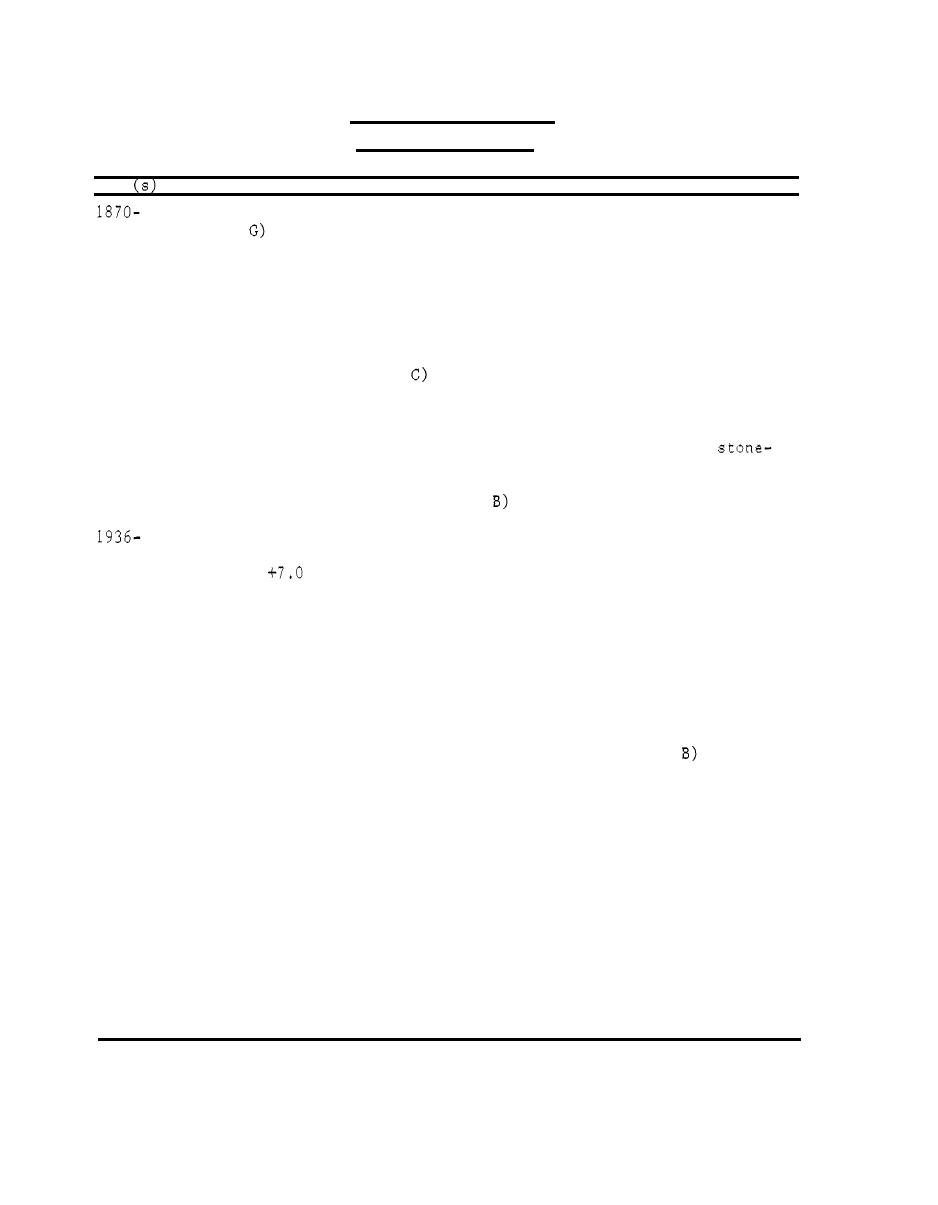
Table 49
White Lake Harbor Piers
White Lake, Michigan
Construction and Rehabilitation History
Date
A 495-ft-long north pier was constructed at the site (Figure 134,
1872
during this time frame. The pier was constructed of wood-
Section
pilings driven from 21 to 29 ft apart and filled with stone (Fig-
ure 135, Section G.
)
1899
A 673-ft-long south pier (Figure 134, Sections C, D, and E) was con-
structed. The inner 369 ft was constructed with woodpilings (Fig-
)
in width from 22 to 26.5 ft. The outer 304-ft-long portion (Fig-
consisted of a stone-filled timber crib
structure that ranged from 28 to 30 ft in width.
The north and south piers were extended by 200 and 150 ft, respec-
1900
tively (Figure 134, Sections A and B. The extensions were
)
filled timber crib structures and were built on a stone base (Fig-
)
The north pier (Section A) was 24 ft in
width, and the south pier (Section
was 34 ft wide.
The north and south piers were capped with concrete and stone super-
structures (Figure 135, Sections A-E and G. The crest els of the
1937
)
pier were
ft lwd.
Fill stone was replenished in the shoreward portion of the north pier
1971
of the south pier revealed signs of deterioration of the timber
washed out between these pilings.
Fill stone was replenished in the lakeward portion (Figure 134, Sec-
1982
tion A of the north pier and the south pier (Figure 134, Section B.
)
)
Riprap stone around the head of the south pier (Section
a l s o was
placed.
Riprap stone around the heads and along the lake and channel sides of
1983
placed in open pockets of the superstructures of this portion of the
pier and grouted over.
An inspection of the structures indicated that the substructures of
1985
both piers are deteriorating, resulting in superstructure settlement
and cracking, considerable misalignment and tilt, and loss of fill
stone. Both structures are considered to be in poor condition,
Reconstruction and/or rehabilitation has been recommended within the
next 2 to 3 years.
217




 Previous Page
Previous Page
